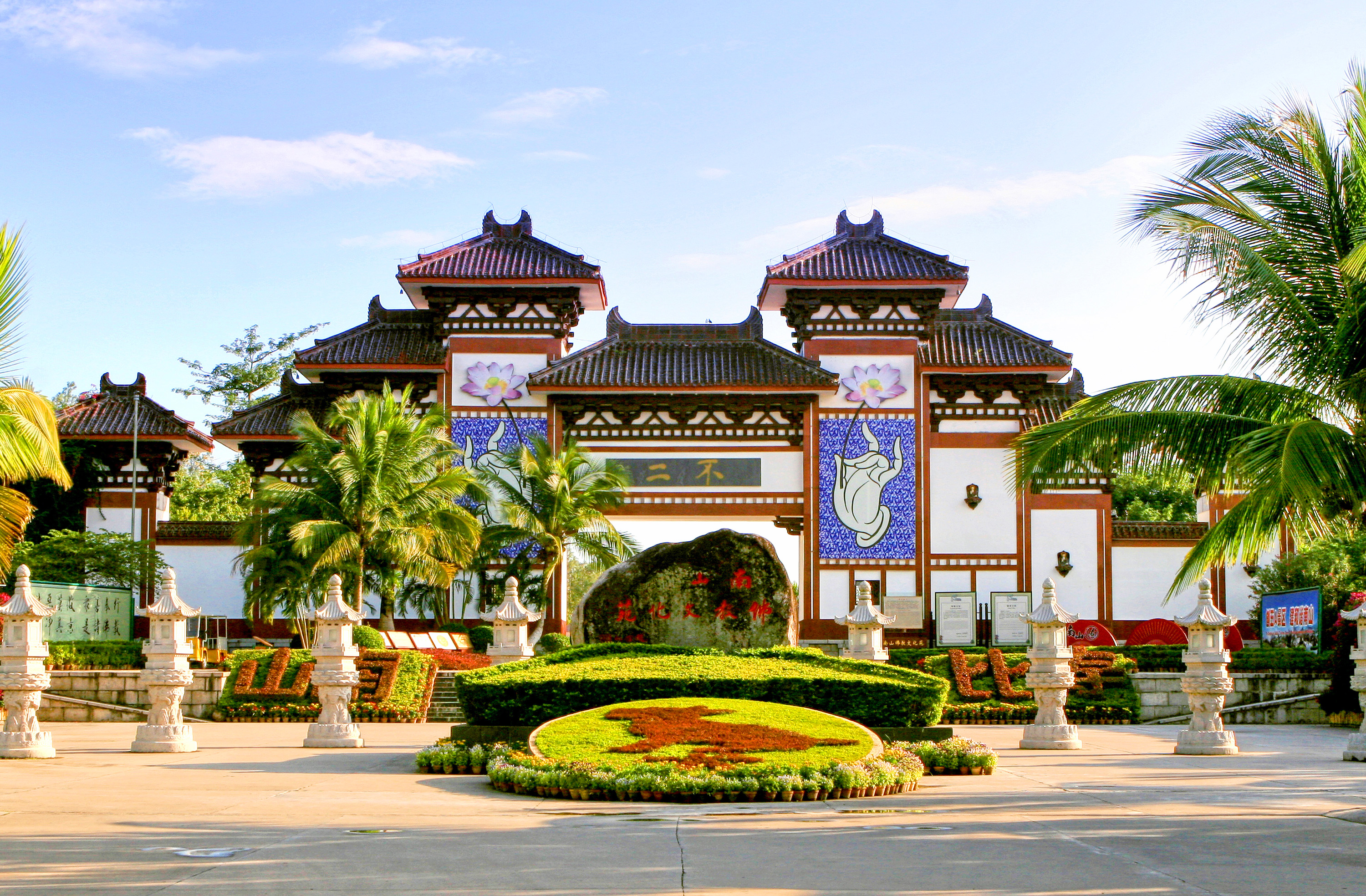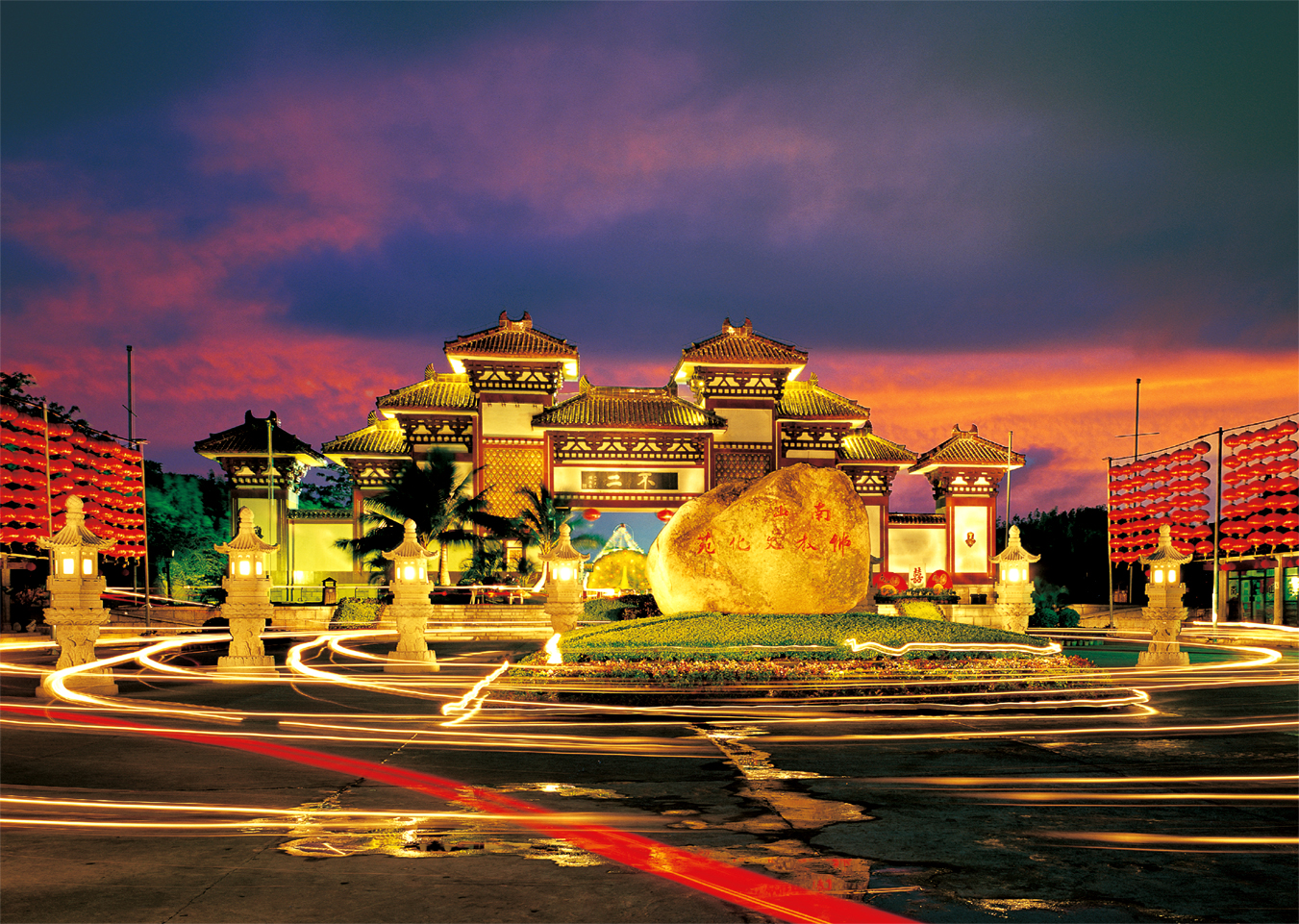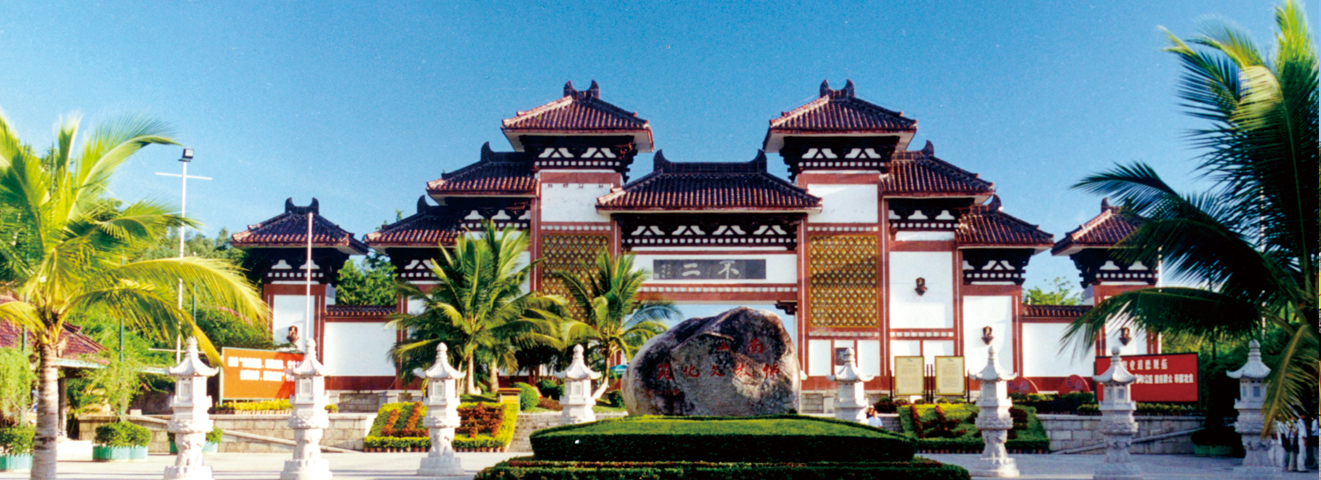Nanshan Dharma-Door of Nonduality is the entrance scenery of the park, featuring the architectural style of the North-South Dynasty. Entering this gate means entering an auspicious and serene land of Buddhism. The delicate handwriting Chinese characters “Nonduality” outside above the door and “Oneness” inside were inscribed by Mr. Gu Ting-Long, a well-known calligrapher, at the age of 94.

“Nonduality” means everything is born equal, with no difference basically. The principal and subsidiary causes are the reasons why everything exists. Once the principal and subsidiary causes disassemble, no substance exists. “Oneness” is the homologue of “Nonduality”, expressed only from different angle. The precise expression implies deep Buddhist allegory.

In Buddhism, a Dharma-Door is an entrance to the Dharma, a teaching about a way or method of practice leading to enlightenment. Thus there are eighty-four thousand Dharma-doors. Among those, the Dharma-Door of Nonduality is considered as the last one at the highest state. Only until entering this door, may one attain enlightenment and get access to Nirvana, the realm of surpassing life and death.

In Vimalakirti Sutra, Manjusri Bodhisattva asked Vimalakirti, “we all have different interpretations on the Dharma-Gate of Non-duality, but virtuous sages would query: “Now, may you elucidate the teaching of the entrance into the principle of Nonduality?” Thereupon, the LicchaviVimalakirti kept his silence, saying nothing at all. The Crown Prince Manjushri applauded the LicchaviVimalakirti: "Excellent! Excellent, virtuous sage! This is indeed the entrance into the Nonduality of the bodhisattvas. Here there is no use for syllables, sounds, and ideas." In short, a Dharma-Door is an entrance to the Dharma. And, the Dharma-Door of Nonduality is inconceivably the absolute truth




 Tourism Standardization:
Tourism Standardization: